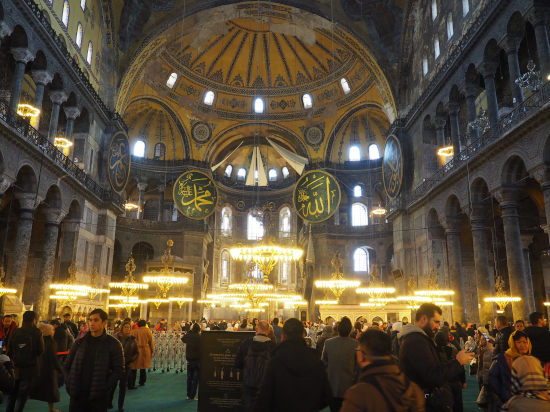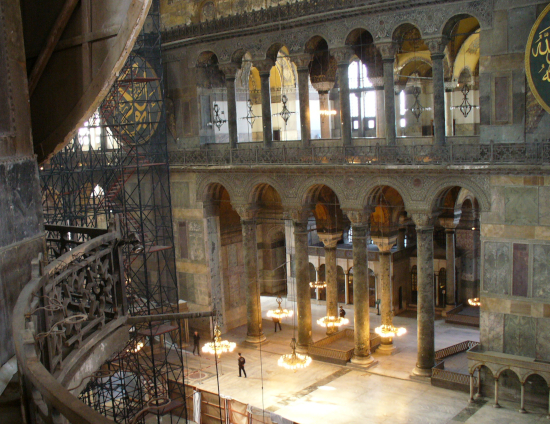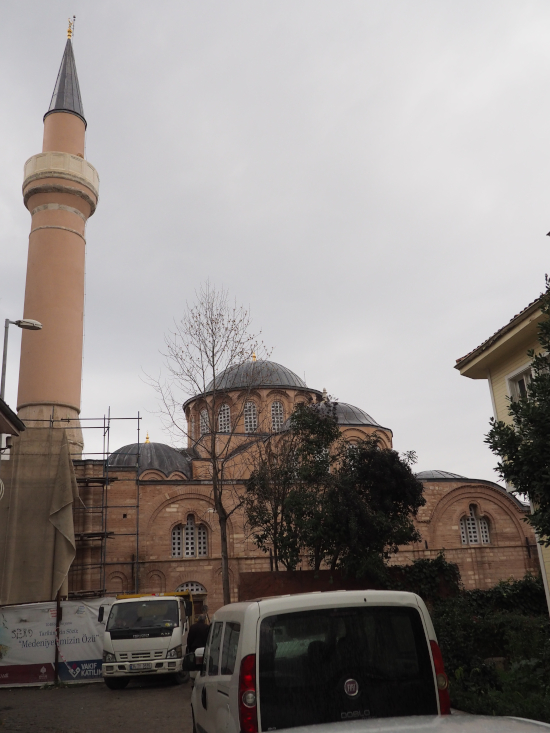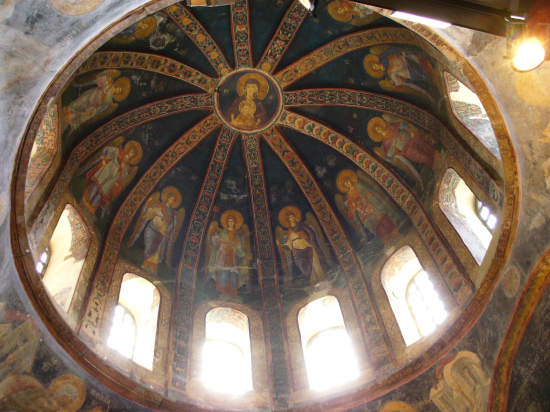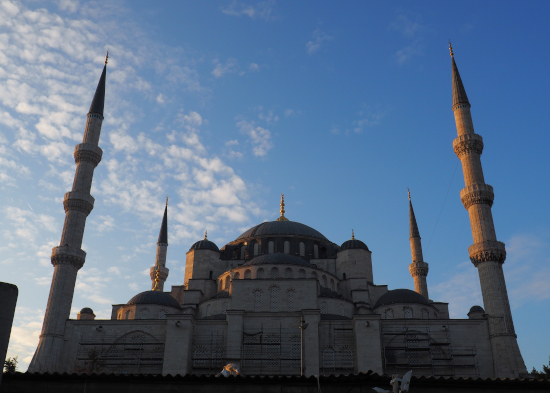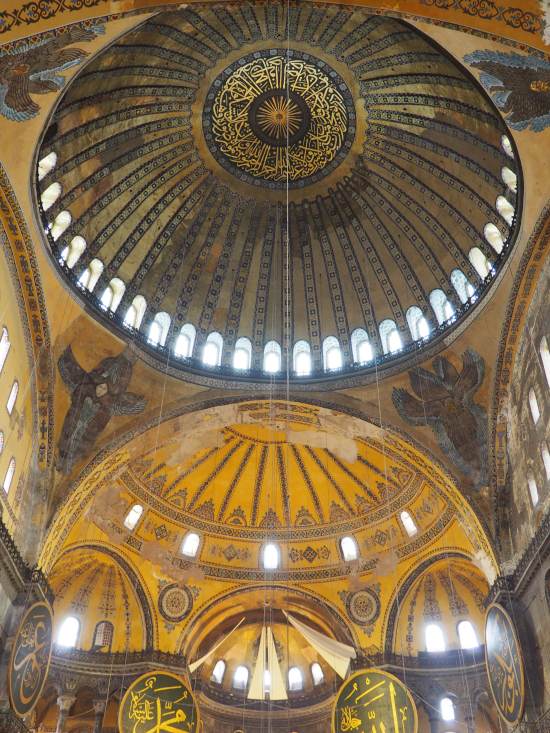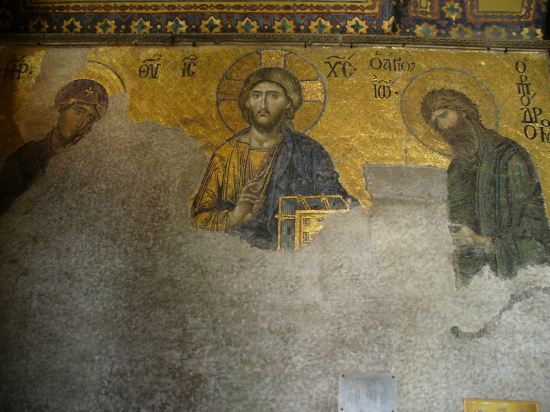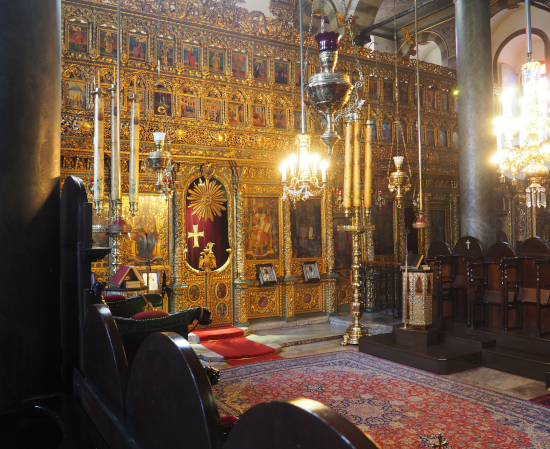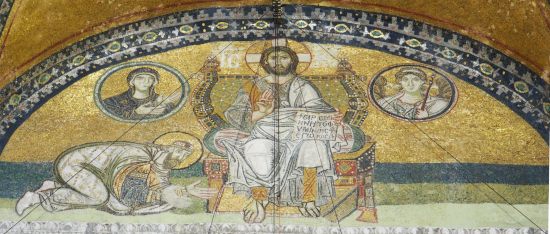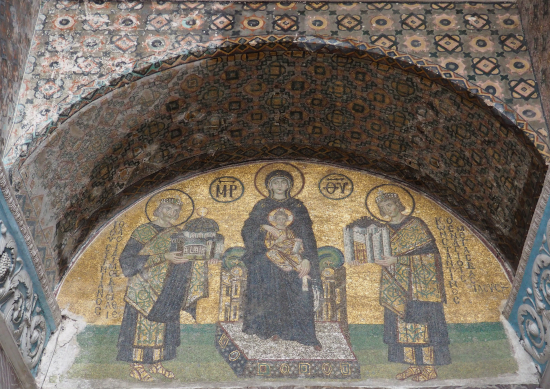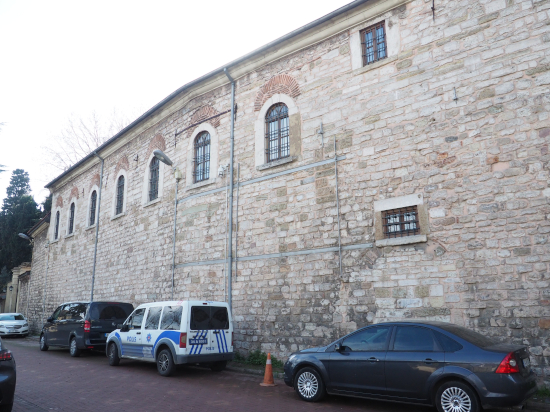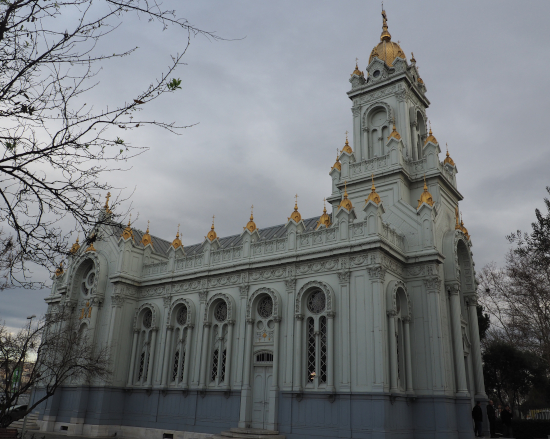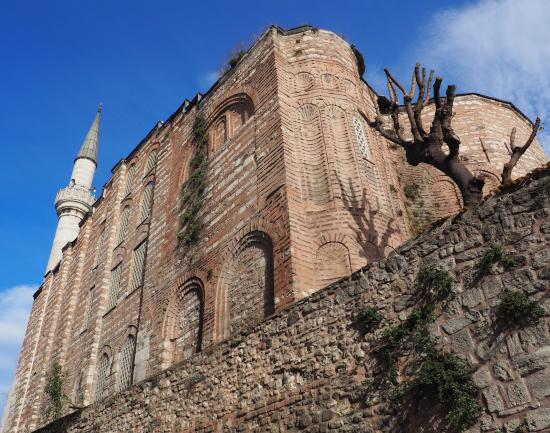
Reflections on Vancouver, British Columbia and other topics, related or not
Covering Christian heritage
with a Muslim veil
Byzantine sites fall victim to Islamic aggression,
political ambition and maybe cultural jealousy
Greg Klein | January 23, 2023
Hagia Sophia: Crowds throng to an architectural marvel
even though priceless images have been blotted from view.
(All photos by Greg Klein)
It is now to be a museum; but some, who have worshipped Christ in it, know that it still is, and will yet be, the Church of the Divine Wisdom.—T.R. Glover on Istanbul’s Hagia Sophia, in his 1935 book The Ancient World
Glover’s meaning might be open to interpretation but there’s inspiration in his optimism. Still, Turkey’s increasing emphasis on Islam comes partly at the expense of not only houses of Christian worship but museums of Christian art. That’s the fate of both Hagia Sophia and Chora, two Constantinople landmarks that were converted from churches to mosques under the Ottomans, to museums under the republic and, in 2020, back into mosques.
This 2009 Hagia Sophia scene shows few people but
a floor-to-dome scaffold obstructing much of the interior.
The first disappointment on re-visiting Istanbul came in a nearly 45-minute lineup for Hagia Sophia, which had surprisingly few visitors in 2009. Discouraging lofty anticipation were persistent queue-jumping attempts by annoying Muslim women. Is there something about that garb that emboldens them? Or does the religion of conquest attract the bellicose of spirit? My recent four-day trip found a much more Muslim city than was the case 14 years earlier.
For example, the burqua is back. Banned in the secularizing campaign of modern Turkey’s founder Mustafa Kemal, it’s now a fairly common site. Much more common are niqabs. This, in a country where even headscarves came under a partial ban until 2014.
How they dress is their business but the renewed conversion of former churches to mosques seems unnecessarily assertive, especially in a city that must already have more mihrabs than the Sultanahmet neighbourhood has rug pushers. And even more especially, in a process that blots out a priceless artistic heritage.
Hagia Sophia’s 2020 handover drew considerable international attention. But just months later, Turkey’s government transferred Chora to Islam, renaming it the Kariye Mosque. Actually a 2019 court decision had already allowed Chora’s handover, possibly sought as a legal precedent for the judicial sentence condemning Hagia Sophia.
Under-publicized, and to this visitor a demoralizing
surprise, was Chora’s transfer to Islam.
A Christian site since the fourth century, the largely 14th-century Chora underwent Muslim domination in the 16th century before being converted to a museum in 1945, as Hagia Sophia had in 1934. Also like Hagia Sophia, Chora hosts a priceless collection of Christian art that again has to be covered, after the painstaking and incomplete removal of whitewash or plaster that was slapped over mosaics and frescoes during the church’s last conversion to a mosque.
The artwork of Chora, now closed for Muslim renovations,
faces an uncertain future. (Click here for more
Chora photos and info.)
One academic specialist described Chora as “the Sistine Chapel of Byzantium.” Another called its forced conversion to Islam a “blatant attempt to erase Istanbul’s rich Byzantine heritage.”
One of many lookalike structures throughout the Muslim world,
Istanbul’s Yeni Mosque presents an architectural variation
of a 6th-century Christian innovation.
A Byzantine influence that’s rife throughout Islam, however, is Hagia Sophia’s architecture. An engineering innovation of sixth-century Christendom, the huge, pendentive-supported dome with its accompanying bays and apses still provides the template for Islamic houses of worship. Muslims add minarets. Eastern Christians, however, transform church interiors into an even greater aesthetic experience.
Could jealousy help motivate cultural obliteration? President Recep Tayyip Erdogan’s critics accuse him of promoting Islam to boost his domestic power and regional influence, but it’s hard not to see a cultural grudge.
Covered over are Christ Pantocrator in Hagia Sophia’s dome,
along with Mary and the Child, and Gabriel and Michael in the apse.
Oddly uncovered is the face of a seraph left of the apse.
Regardless, triumphant Islam’s specific intentions for Christian expression remain unclear. Post-1934 restoration to remove the hardened muck covering Hagia Sophia art has likely stopped. Certainly no one’s going to remove the Islamic wallpaper design that blocks Christ Pantocrator in the dome ceiling. Media reports from 2020 suggested the art that had been exposed since 1934 would be curtained off only during Muslim prayer times. But this recent visit saw curtains blocking the apse mosaics of Mary and the Child, Gabriel to their left and Michael to their right. Strangely uncovered, though, was the seraph face, one of four in the pendentives, that accidentally came uncovered in 2009.
A 2009 photo shows the partly restored 13th-century Deësis mosaic with
Jesus, Mary and John the Baptist. Considered an especially magnificent
work, it’s now closed off with the other art in Hagia Sophia’s gallery.
(Click here for more photos and info about Hagia Sophia mosaics.)
Muslim worshippers don’t use the second-storey gallery, so they need not be troubled by its rich mosaics. Even so, that section has been shut down. There’s no readily available information about why or for how long.
As for Chora, the mosque conversion has taken place yet the entire building’s closed while some kind of “work” takes place. A hostile crew of shovel-toting slackers told me I wasn’t allowed to take the photos that I was taking.
Part of the iconostasis and nave at
Istanbul’s Patriarchal Church of St. George.
Christian worship continues in Istanbul, most notably at the Patriarchal Church of St. George, the Orthodox world’s foremost see. A 2014 book by John Chryssavgis, The Ecumenical Patriarchate Today, counts “forty-seven churches and ten monasteries in the immediate territory of Istanbul and over 100 churches and chapels in the surrounding area.”
It’s not clear how many retain active congregations. Chryssavgis notes a previous Istanbul/Constantinople list totalling “over one thousand significant churches and monasteries, excluding countless chapels and shrines.”
A dwindling population aided by ethnic cleansing, revived by Ankara in the 1950s, explains much of the decline. Visitors to Greece might be surprised to learn how many Muslim sites have been obliterated since the 1821 War of Independence. Now Turkey’s Islamic resurgence, whether a government ploy or popular movement, brings reminders of a recurring religious and cultural clash. But again, does jealousy play a role? Otherwise, why this gratuitous nullification of two artistic treasures in a city already replete with mosques?
Update: On May 27, 2023, one day before Turkey’s presidential election and two days before the 470th anniversary of the Ottoman conquest of Constantinople, Recep Tayyip Erdogan led prayers in Hagia Sophia. Voters narrowly re-elected the “Islamist neo-Ottoman” on May 28, when crowds returned to the church-turned-mosque to celebrate his victory.
Related:
Could Turkey’s policy
encourage Western iconoclasm?
Some additional photos:
Two striking mosaics remain on display in Hagia Sophia’s narthex.
This one pictures Jesus, Mary and Gabriel, with a bowing figure
who’s probably Leo VI.
Another narthex mosaic depicts Mary and the Child,
with Justinian and Constantine offering the church and the city.
An Ottoman edict required the Patriarchate of St. George,
the most important remaining church in the Orthodox world,
to maintain an inconspicuous exterior on an Istanbul sidestreet.
That edict didn’t affect the more recent Church of St. Stefan,
an 1890s prefab cast-iron structure prominently situated on
a major thoroughfare along the Golden Horn.
The Church of St. Stefan’s iconostasis.
But church conversions can be a fairly common Istanbul sight.
